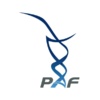PAF awarded a $32,912 research grant to Oleg Shchelochkov, M.D. and Charles P. Venditti MD, PhD at National Human Genome Research Institute, National Institutes of Health – 2018
“Diversion of Isoleucine and Valine Oxidative Pathway to Reduce the Propionogenic Load in Propionic Acidemia.”
Patients with propionic acidemia require lifelong protein restriction. In addition to taking a protein restricted diet, many propionic acidemia patients are also prescribed medical formulas. This dietary approach aims to decrease the intake of four amino acids that can become propionic acid. These four amino acids – isoleucine, valine, threonine, and methionine – are called essential, because they cannot be made in the human body and need to be supplied from foods. Too much protein intake creates a situation where excess can lead to a buildup of propionic acid in the body. On the other hand, limiting these four amino acids too much can lead to poor growth. Therefore, patients’ diets are optimized to minimize propionic acid production while encouraging good growth. We wonder whether it is possible to increase dietary protein intake while minimizing the risk of propionic acid buildup.
To answer this question, we are planning to do a series of experiments in zebrafish. Why use zebrafish? Zebrafish share significant similarity to humans in how they process propionic acid. In addition, zebrafish reproduce and mature quickly, which are very important qualities to help search for new drugs that could be used to treat propionic acidemia. Our zebrafish are kept in a special building where the animals are being cared for by a dedicated team that includes scientists, veterinarians, engineers, aquatic specialists, and many others. They check on fish and feed them several times a day, maintain fish tanks, and keep their water very clean.
This type of facility is unique and had enabled our studies of metabolic diseases in zebrafish. Our ongoing studies have shown that zebrafish affected by metabolic diseases have symptoms that are very similar to patients. Even with treatment, affected fish have difficulty growing, get tired easily, have poor appetites and sometimes perish before adulthood. Using special genomic tools, we are planning to change in how the fish processes protein to direct it away from becoming propionic acid. As we make these changes to the biochemical pathways of propionic acidemia zebrafish, we will be carefully watching how these treatments improve their growth, development, appetite and survival. These experiments will help us understand how we can potentially reduce propionic acid toxicity while helping patients achieve a less restrictive diet.
Interview with Joel Pardo – Summer 2020
Can you tell me about yourself and how you became interested in science?
I was always interested in the sciences. I think ultimately what propelled me towards a career in science was my research experience at the University of California, San Diego. The mentorship I received from Dr. Joshua Bloomekatz helped me develop the ability to reason scientifically and appreciate the opportunities to grow professionally. I learned from him how to design experiments to answer important scientific questions. We often had lengthy discussions about the direction of my project. He helped me make sense of the collection of observations coming from different sources and nurtured my own independent thinking.In gaining an appreciation for his analytical method of thinking, I began to see myself as someday contributing to scientific thinking as a physician-scientist.
During your training at NIH, you worked on a project to find new treatments using zebrafish. What did you find exciting and challenging about studying zebrafish?
Most people are familiar with mice, which are often used in science to find and test new drugs. Working with mice requires a lot of work to have enough animals needed for an experiment. Zebrafish, on the other hand, can produce hundreds of offspring after one breeding cycle. Zebrafish lay eggs directly into water, which also makes it easier to study them soon after they hatch. Somewhat surprisingly,the zebrafish enzymes that handle propionic acid are very similar to the enzymes in humans. These two properties of zebrafish make them an exciting model to study a disease like propionic acidemia.
One of the most challenging parts of my research in zebrafish was their size. Zebrafish offspring are very small, measuring less than a quarter of an inch. I had to spend a lot of time looking at zebrafish under the microscope and learn how to move them around without hurting them. This can be difficult as these small animals are fragile at this young age.
Can you tell us about your PA project?
Earlier in my work, we were able to get zebrafish, which had mutations in the genes linked to propionic acidemia. I needed to understand what propionic acidemia does to zebrafish. We were able to show that propionic acidemia in zebrafish looks a lot like the disease we see in patients. Fish with propionic acidemia had poor appetite, did not grow well, and had difficulty moving. Using special genetic tools, we then attempted to change how zebrafish processed propionic acid and helped them survive longer. Our preliminary results are proving promising, but more work is still needed.
What are your plans after you complete your training at NIH?
The NIH postbac program is a full-time research award for students that have recently completed a bachelor’s degree and are considering a career in science or medicine. I was fortunate enough to join Dr. Charles Venditti’s lab 2 years ago to work on the zebrafish project under Dr. Oleg Shchelochkov. I thoroughly enjoyed my post-bac experience. Looking back on the past 2 years, I feel the lab, and in particular the mentorship of Dr. Shchelochkov, has facilitated and nurtured my growth as a future physician-scientist with roots in propionic acidemia research. In 2019 I applied to MD/PhD programs at several US universities. After having traveled to over half a dozen states and interviewing at many fantastic universities, I ultimately decided upon the physician-scientist training program at University of Minnesota. As I plan my transition to the program, I am currently looking for winter coats.
